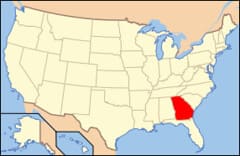Are you a homeowner in California with a septic tank? If so, staying compliant with the state’s laws and regulations regarding septic tank maintenance is crucial. Failing to do so can result in costly fines and potential damage to the environment. But fear not! In this article, we will guide you through the process of properly maintaining your septic tank while ensuring compliance with California laws.
From understanding the intricacies of California’s septic system laws to obtaining the necessary permits and implementing best practices for maintenance, we’ve got you covered. So sit back, relax, and let us help you navigate the world of septic tanks in California with ease and confidence. By following our expert advice, you can rest assured that your septic system will be in optimal working condition while remaining compliant with all applicable regulations.
The Importance of Compliance with California Septic Tank Regulations
When it comes to maintaining your septic tank in California, compliance with state regulations is of paramount importance. Not only does adhering to these laws ensure the proper functioning and longevity of your septic system, but it also protects the environment and safeguards public health. The unique landscape and population density of California necessitate stringent regulations to prevent contamination of groundwater, rivers, and lakes.
By complying with California septic tank regulations, you actively contribute to the preservation of natural resources and the overall well-being of your community. Proper maintenance prevents hazardous waste from leaching into the ground and polluting water sources that sustain both humans and wildlife. It is essential to remember that environmental stewardship extends beyond our immediate surroundings; it involves protecting our shared ecosystem for future generations.
Moreover, compliance instills a sense of responsibility in homeowners, reminding them that they hold a vital role in safeguarding public health. Septic tank systems that are not properly maintained can result in sewage backups or leaks, leading to potential health risks for residents and neighbors alike. Ensuring compliance means taking proactive steps towards a clean and healthy living environment for everyone.
Lastly, staying compliant with California’s septic tank regulations can bring peace of mind knowing that you are fulfilling your legal obligations as a homeowner or property owner. By following these guidelines, you demonstrate your commitment to upholding local laws while affirming your dedication to being an engaged citizen within the community. Compliance not only protects against potential fines or penalties but also reflects positively on your reputation as a responsible member of society.
Understanding California Septic System Laws
California has established stringent laws to regulate septic systems in order to protect public health, the environment, and groundwater quality. It is crucial for residents to familiarize themselves with these laws to ensure compliance and prevent any potential issues in the future.
The state’s main governing body responsible for overseeing septic system regulations is the California State Water Resources Control Board. They have implemented a comprehensive set of guidelines that outline the requirements for the design, installation, operation, and maintenance of septic tanks throughout the state.
One important aspect of California’s septic system laws is obtaining a proper permit before installing or modifying a septic tank. Permits are typically issued by local enforcement agencies or local health departments. These permits ensure that all installations meet specific standards and are designed in accordance with state regulations.
Additionally, it is essential to understand zoning restrictions related to septic systems in California. Different areas may have varying rules regarding setbacks from property lines or water sources like wells and streams. Familiarizing yourself with these restrictions will help you avoid potential legal complications and ensure your septic tank is installed in an appropriate location.
Obtaining a Septic Tank Permit in California
When it comes to installing or upgrading a septic tank system in California, obtaining the necessary permits is an essential step. The state’s stringent regulations aim to protect public health and the environment. To navigate this process smoothly, you’ll need to follow specific guidelines and provide relevant documentation.
Firstly, you should gather information about your property’s zoning requirements. Each county in California has its own guidelines regarding setback distances, soil conditions, and capacity restrictions for septic tanks. Familiarize yourself with these regulations to ensure compliance and avoid unnecessary delays.
Contacting your local health department is crucial for initiating the permit application process. They can provide you with the necessary forms and inform you of any additional documents required, such as site plans or soil analysis reports. It’s important to submit accurate information to expedite the approval process.
Once you’ve gathered all the required documents, it’s time to complete the permit application form meticulously. Pay attention to every detail, ensuring that all fields are correctly filled out and any supporting documents are attached as requested. Double-checking your application will help prevent avoidable errors that could cause delays in the review process.
Best Practices for Maintaining Your Septic Tank in California
Proper maintenance of your septic tank is essential to ensure its efficient functioning and comply with California laws. By following these best practices, you can safeguard the environment, protect public health, and avoid costly repairs.
Regular Pumping
Schedule regular septic tank pumping every three to five years to prevent solids from accumulating and clogging the system. This routine maintenance not only prolongs the lifespan of your septic tank but also reduces the risk of sewage backup into your home or yard. Think of it as a healthy detox for your septic system, ensuring smooth operation.
Careful Chemical Usage
Be cautious when using household chemicals that can harm the balance of bacteria in your septic tank. Harsh cleaning agents, bleach, and strong solvents should be used sparingly or avoided altogether. Opt for environmentally-friendly alternatives instead. Remember, a happy septic tank means a happier planet.
Mindful Water Usage
Conserving water not only benefits the environment but also helps maintain a healthy septic system. Spread out heavy water usage activities like laundry over the week to avoid overwhelming the tank. Fix any leaks promptly and install low-flow fixtures to reduce water consumption. By being water-wise, you’ll contribute to both cost savings and sustainability.
Landscape Considerations
Avoid planting deep-rooted trees or shrubs near your septic system as their roots can infiltrate pipes and cause damage over time. Additionally, ensure proper drainage around your drainfield by diverting surface water away from it. By maintaining a well-manicured landscape around your septic tank area, you’ll create an aesthetically pleasing environment while safeguarding its functionality.
Key Steps to Ensure Compliance with California Septic Tank Codes
Ensuring compliance with California septic tank codes is crucial to avoiding legal issues and safeguarding the environment. By following these key steps, you can maintain a well-functioning septic system while adhering to the regulations set forth by the state.
Regular Inspections: Schedule regular inspections by a certified professional to assess your septic system’s condition and ensure it meets all necessary requirements. These inspections will identify any potential problems early on, allowing for timely repairs or upgrades.
A well-maintained septic tank not only prevents contamination of groundwater but also contributes to a healthier environment for future generations.
Pump Your Tank Regularly: Properly maintaining your septic tank involves regular pumping to remove accumulated solids. The frequency of pumping depends on factors such as household size and water usage, so consult with a professional who can determine an optimal pumping schedule for your specific situation.
By adhering to a regular pumping schedule, you reduce the risk of overflow or blockages that can lead to expensive repairs and environmental damage.
Mindful Water Usage: Be mindful of water usage habits within your household. Conserving water not only reduces strain on your septic system but also helps protect our precious natural resources. Use low-flow fixtures, repair any leaks promptly, and spread out heavy water usage activities like laundry throughout the week instead of overloading the system in a single day.
Your responsible water usage not only supports sustainable living but also promotes proper functioning of your septic system while minimizing potential harm caused by excessive wastewater accumulation.
Avoid Flushing Harmful Substances: To protect both your septic system and the environment, never flush harmful substances down the drain. This includes chemicals, grease, medications, and non-biodegradable items. Dispose of these materials properly through designated channels to prevent clogs or contamination of the soil and groundwater.
By being mindful of what goes down your drains, you contribute to a cleaner ecosystem and prolong the lifespan of your septic system.
By following these key steps for compliance with California septic tank codes, you not only ensure legal adherence but also promote an environmentally-friendly approach to wastewater management. By taking care of your septic system responsibly, you protect both public health and our precious natural resources.
The Consequences of Non-compliance with California Septic Tank Regulations
Ensuring compliance with California septic tank regulations is not just a legal obligation; it directly impacts the health and well-being of both individuals and the environment. Failure to comply with these regulations can result in severe consequences that can be detrimental in various ways.
Firstly, non-compliance may lead to significant financial penalties imposed by regulatory authorities. These fines can range from hundreds to thousands of dollars, depending on the severity of the violation. Additionally, repeat offenders may face even more substantial penalties and potential legal action, adding unnecessary stress and financial burden.
In addition to financial consequences, non-compliance poses risks to public health. Improperly maintained septic tanks can contaminate groundwater sources, leading to the spread of harmful bacteria and pathogens. This contamination can have devastating effects on both human health and local ecosystems, contributing to waterborne diseases and damaging fragile ecological systems.
Moreover, non-compliant septic systems contribute to environmental degradation. Raw sewage leakage resulting from inadequate maintenance can pollute nearby bodies of water such as rivers or lakes. This pollution disrupts aquatic ecosystems and compromises the biodiversity within them. The long-term impact includes habitat destruction for aquatic plants and animals, disrupting fragile ecosystems that rely on clean water for survival.
Common Mistakes to Avoid While Maintaining Your Septic Tank in California
Proper maintenance of your septic tank is crucial to ensure its longevity and functionality. However, there are several common mistakes that homeowners often make when it comes to caring for their septic systems in California. By avoiding these pitfalls, you can save yourself from potential headaches and costly repairs down the line.
Neglecting Regular Pumping
One of the most common mistakes made by homeowners is neglecting the regular pumping of their septic tanks. Over time, solids and sludge build up in the tank, which can lead to blockages and sewage backups. It is recommended to have your septic tank pumped every three to five years, depending on its size and household usage. By adhering to this schedule, you can prevent unnecessary issues and keep your system running smoothly.
Flushing Inappropriate Materials
Another major mistake is flushing inappropriate materials down the toilet or drains connected to the septic system. Items such as baby wipes, feminine hygiene products, cooking grease, and paper towels should never be disposed of through the septic system. These materials can clog pipes and cause damage to your tank’s delicate balance of bacteria that break down waste. Proper waste disposal practices will help maintain a healthy system.
Neglecting Drainfield Maintenance
The drainfield plays a vital role in filtering wastewater from your septic tank back into the ground safely. Neglecting its maintenance can result in failure and costly repairs or replacements. To avoid this mistake, ensure that you do not park vehicles or place heavy objects on top of your drainfield area. Additionally, avoid planting trees or shrubs with aggressive root systems nearby as they may infiltrate pipes or disrupt the proper functioning of your septic system.
Ignoring Warning Signs
Ignoring warning signs of septic tank issues is a mistake that can lead to significant problems. If you notice slow drains, foul odors, gurgling sounds, or wet spots in your yard, it is crucial not to dismiss them. These indicators may signal a failing septic system that requires immediate attention. Acting promptly and seeking professional assistance can help prevent further damage and costly repairs.
Remember, by avoiding these common mistakes in maintaining your septic tank in California and adopting responsible practices, you can ensure the longevity and optimal performance of your system. A well-maintained septic system will not only save you money but also contribute to the protection of the environment and overall community health.
Professional Septic Tank Maintenance Services in California
When it comes to the proper care and maintenance of your septic tank, enlisting the services of professional technicians in California can provide you with peace of mind and ensure compliance with state regulations. These trained experts possess the knowledge, experience, and specialized equipment necessary to handle any septic tank-related issues effectively.
A reputable septic tank maintenance service in California will offer a wide range of services tailored to meet your specific needs. They can perform regular inspections, routine pumping, and thorough cleaning of your septic tank system. Additionally, these professionals can diagnose any potential problems such as blockages or leaks before they escalate into costly repairs.
By entrusting your septic tank maintenance to professionals, you can rest assured that they will adhere to all applicable laws and regulations set forth by the state of California. Their expertise allows them to accurately assess the health and functionality of your system and recommend appropriate solutions if needed.
Moreover, professional septic tank maintenance services utilize environmentally friendly practices that prioritize sustainable waste disposal methods. This not only ensures legal compliance but also contributes to preserving California’s natural resources for future generations. By choosing these expert services, you actively participate in maintaining a clean and healthy environment while protecting public health.
Tips for Long-Term Septic Tank Care and Maintenance in California
Proper care and maintenance of your septic tank is crucial to ensure its longevity and prevent costly repairs. By following these expert tips, you can keep your septic system functioning efficiently for many years to come.
1. Regular Pumping
Schedule regular pumping of your septic tank every 3-5 years, depending on the size of your household and usage. This process removes accumulated sludge and prevents it from clogging the drain field, ensuring optimal performance. Regular pumping also provides an opportunity for professionals to inspect the tank’s condition and identify any potential issues before they escalate.
Remember, investing in timely pumping not only saves you money in the long run but also protects the environment by preventing contamination of nearby water sources.
2. Mindful Water Usage
Conserving water not only benefits the environment but also helps maintain a healthy septic system. Be mindful of excessive water usage, such as running multiple appliances simultaneously or letting faucets run unnecessarily. Repair any leaks promptly to avoid overloading your septic system with excess water that it cannot handle effectively.
By adopting conscious water-saving habits, you contribute towards sustainable living while prolonging the life of your septic tank.
3. Proper Disposal Practices
Avoid flushing or draining anything other than human waste and toilet paper into your septic system. Harsh chemicals, grease, oils, medications, feminine hygiene products, or excessive amounts of cleaners can disrupt the delicate balance within the tank and hinder proper decomposition processes. Dispose of hazardous waste at designated facilities instead.
Maintaining proper disposal practices not only safeguards your septic tank but also protects groundwater and surrounding ecosystems, promoting a cleaner environment for future generations.
4. Landscape Considerations
Be mindful of the placement of trees, shrubs, and other vegetation near your septic system. The roots of large trees can infiltrate and damage septic tanks or drainpipes, leading to costly repairs. Consult an arborist or landscaping professional to ensure proper distances are maintained between plantings and your septic infrastructure.
By carefully planning your landscape, you not only protect your septic tank but also enhance the beauty of your outdoor space.
Remember, a well-maintained septic tank is the cornerstone of a smoothly running household. By incorporating these tips into your routine maintenance plan, you can enjoy both peace of mind and a healthy environment.
Inspiring Stories of Successful Compliance with California Septic Tank Regulations
When it comes to staying compliant with California septic tank regulations, there are numerous success stories that serve as a beacon of hope for others. These tales of triumph over adversity demonstrate the power of knowledge, commitment, and responsible action.
One such inspiring story is that of the Johnson family from Roseville. Mr. Johnson was initially overwhelmed by the strict regulations governing septic tanks in his area. However, he decided to attend a local workshop on septic system maintenance and regulation compliance. Armed with newfound knowledge, he implemented best practices such as regular pumping and inspection. Not only did his septic system pass all inspections with flying colors, but he also noticed a significant improvement in the overall performance and longevity of his system.
Another remarkable tale comes from the coastal town of Santa Cruz, where Mrs. Ramirez took it upon herself to educate her community about proper septic tank maintenance. She organized a neighborhood workshop where experts shared insights on compliance requirements and offered practical tips for maintaining septic systems effectively. Through her efforts, Mrs. Ramirez not only ensured compliance among her neighbors but also fostered a sense of community engagement and responsibility towards environmental stewardship.
In San Diego County, Mr. Thompson faced an unexpected challenge when his aging septic tank began to malfunction during heavy rainfall periods. Rather than resorting to quick fixes or ignoring the problem altogether, Mr. Thompson reached out to professional septic tank services for assistance. The experts not only repaired his system promptly but also provided guidance on implementing preventive measures like proper landscaping and rainwater diversion techniques to avoid future issues caused by heavy rains.
Lastly, let’s take inspiration from the story of Ms. Lee in Modesto who converted her dismay at rising maintenance costs into an opportunity for innovation and sustainability efforts while maintaining her septic tank. She researched alternative methods and discovered the benefits of a natural wastewater treatment system. By installing a constructed wetland, she not only reduced her reliance on energy-intensive processes but also witnessed first-hand the positive impact on local biodiversity.
These stories remind us that compliance with California septic tank regulations is not just about avoiding penalties. It is an opportunity to make a positive difference in our environment, foster community engagement, and discover innovative approaches to waste management. By learning from these examples and committing ourselves to responsible practices, we can pave the way for a greener and more sustainable future.
Conclusion
In conclusion, maintaining compliance with California’s septic tank laws is crucial for the health and safety of both individuals and the environment. By following the proper maintenance techniques, obtaining necessary permits, and availing professional services, you can ensure that your septic system operates efficiently and in accordance with regulations. Remember, by staying on top of your septic tank’s care, you are not only safeguarding your property but also contributing to the preservation of California’s natural resources for future generations. Embrace the responsibility of a well-maintained septic system and revel in the peace of mind it brings.





